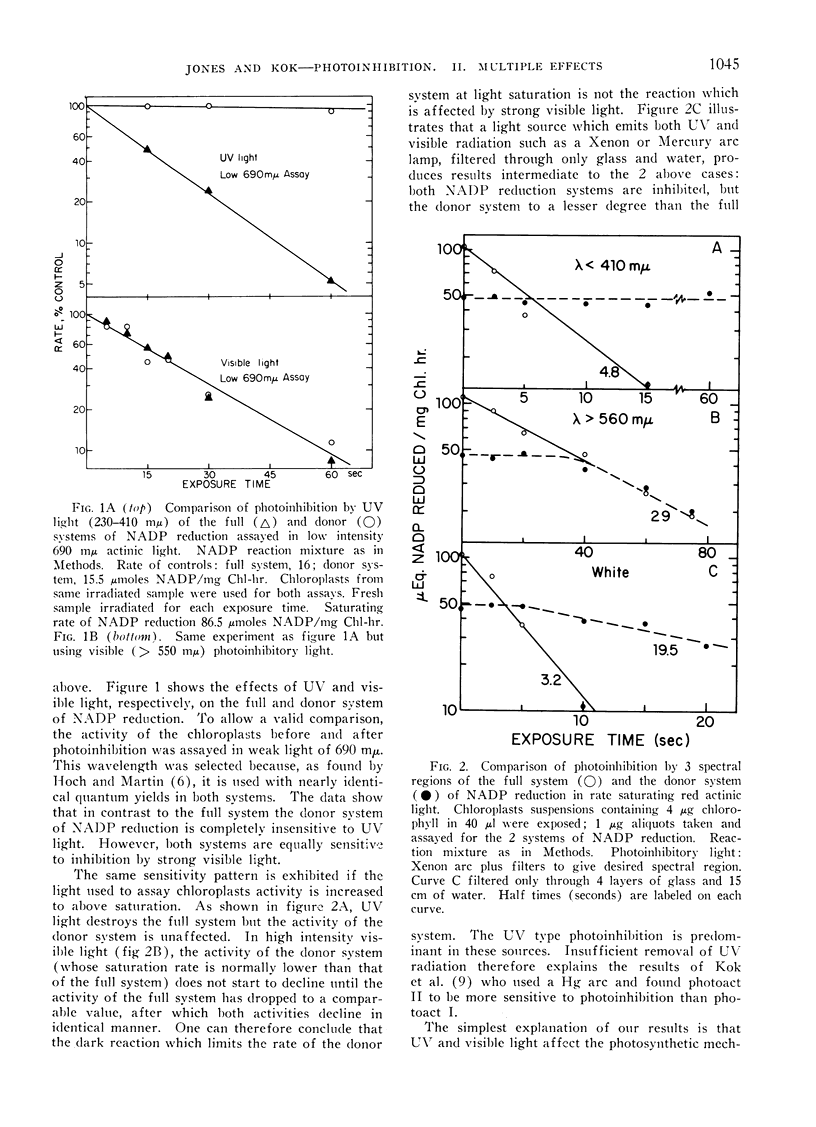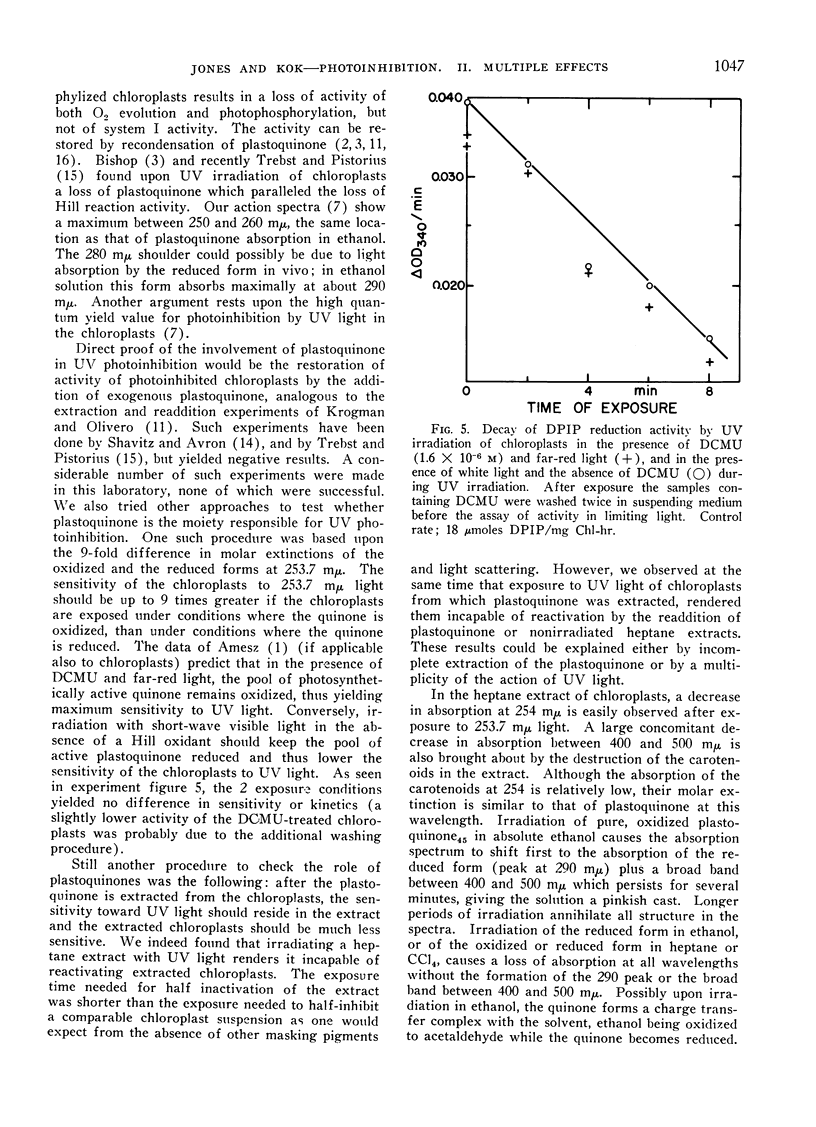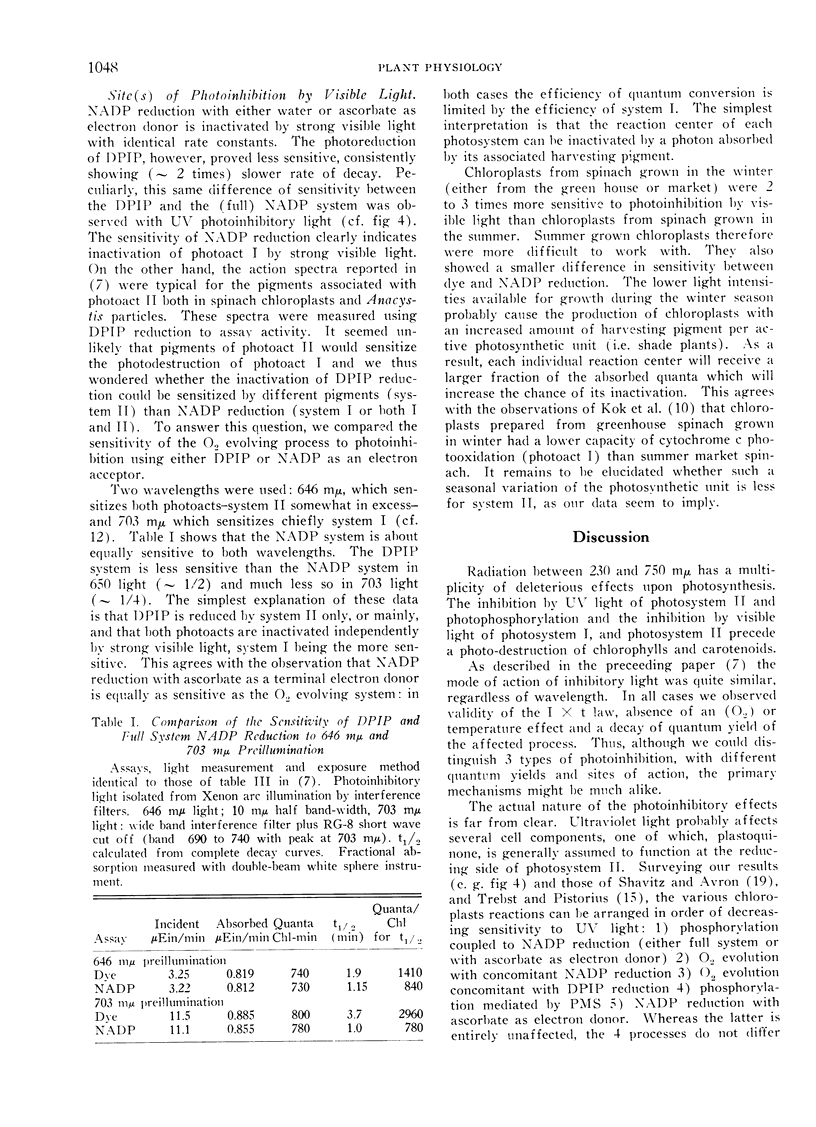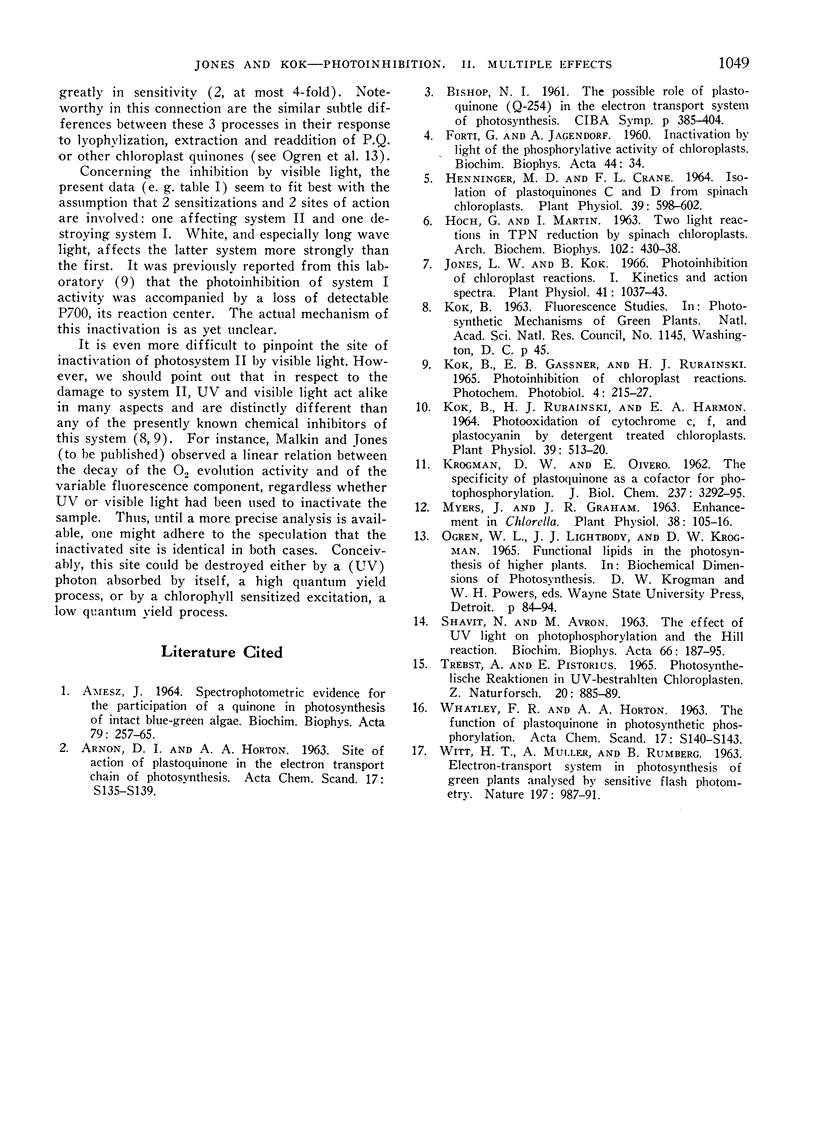Abstract
Ultraviolet light inhibits the photoreduction of 2,6-dichlorophenolindo-phenol or nicotinamide adenine dinucleotide phosphate with water as the electron donor (evolution of oxygen) but not the photoreduction of nicotinamide adenine dinucleotide phosphate with ascorbate as the electron donor. It inhibits photophosphorylation associated with either system. Experiments undertaken to test whether plastoquinone is the site of UV inhibition yielded inconclusive results.
Visible light (> 420 mμ) causes the loss of all chloroplast activities, photosystem I being more sensitive than system II. The data suggests 2 modes of action for visible light. The one sensitized by system II results in damage resembling that of UV light. The other, sensitized by system I, results in the destruction of the reaction center of this system.
Full text
PDF





Selected References
These references are in PubMed. This may not be the complete list of references from this article.
- FORTI G., JAGENDORF A. T. Inactivation by light of the phosphorylative activity of chloroplasts. Biochim Biophys Acta. 1960 Oct 21;44:34–40. doi: 10.1016/0006-3002(60)91519-5. [DOI] [PubMed] [Google Scholar]
- HOCH G., MARTIN I. TWO LIGHT REACTIONS IN TPN REDUCTION BY SPINACH CHLOROPLASTS. Arch Biochem Biophys. 1963 Sep;102:430–438. doi: 10.1016/0003-9861(63)90251-0. [DOI] [PubMed] [Google Scholar]
- Henninger M. D., Crane F. L. Isolation of Plastoquinones C and D from Spinach Chloroplasts. Plant Physiol. 1964 Jul;39(4):598–602. doi: 10.1104/pp.39.4.598. [DOI] [PMC free article] [PubMed] [Google Scholar]
- Jones L. W., Kok B. Photoinhibition of chloroplast reactions. I. Kinetics and action spectra. Plant Physiol. 1966 Jun;41(6):1037–1043. doi: 10.1104/pp.41.6.1037. [DOI] [PMC free article] [PubMed] [Google Scholar]
- KROGMANN D. W., OLIVERO E. The specificity of plastoquinone as a cofactor for photophosphorylation. J Biol Chem. 1962 Oct;237:3292–3295. [PubMed] [Google Scholar]
- Kok B., Gassner E. B., Rurainski H. J. Photoinhibition of chloroplast reactions. Photochem Photobiol. 1966 Mar;4(2):215–227. doi: 10.1111/j.1751-1097.1965.tb05739.x. [DOI] [PubMed] [Google Scholar]
- Kok B., Rurainski H. J., Harmon E. A. Photooxidation of Cytochromes c, f, and Plastocyanin by Detergent Treated Chloroplasts. Plant Physiol. 1964 Jul;39(4):513–520. doi: 10.1104/pp.39.4.513. [DOI] [PMC free article] [PubMed] [Google Scholar]
- Myers J., Graham J. R. Enhancement in Chlorella. Plant Physiol. 1963 Jan;38(1):105–116. doi: 10.1104/pp.38.1.105. [DOI] [PMC free article] [PubMed] [Google Scholar]
- SHAVIT N., AVRON M. The effect of ultraviolet light on photophosphorylation and the Hill reaction. Biochim Biophys Acta. 1963 Mar 19;66:187–195. doi: 10.1016/0006-3002(63)91185-5. [DOI] [PubMed] [Google Scholar]


